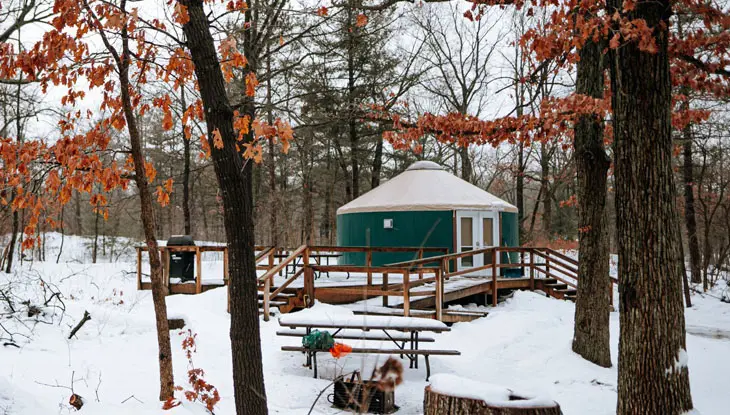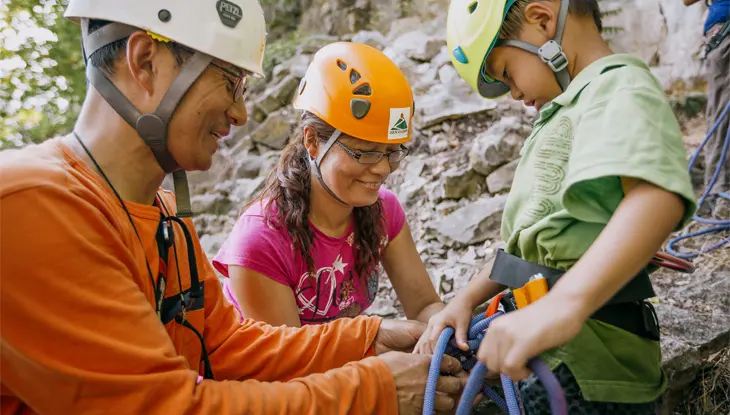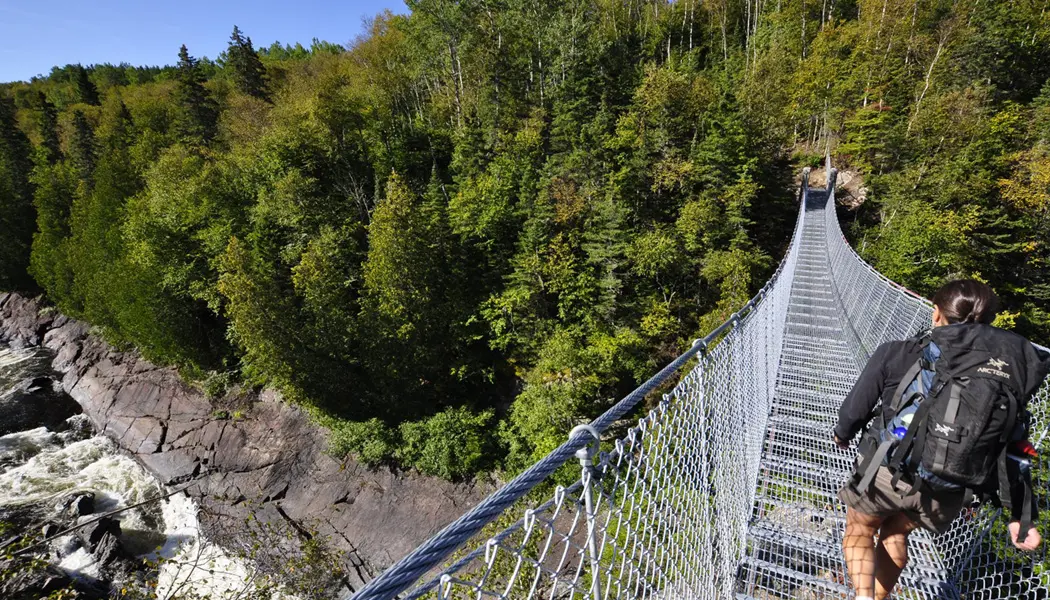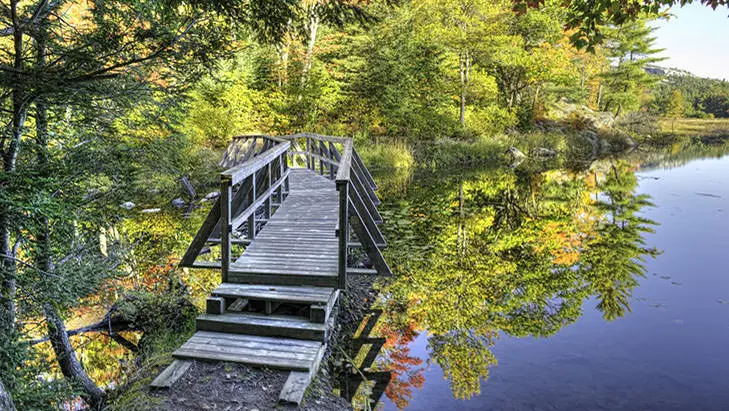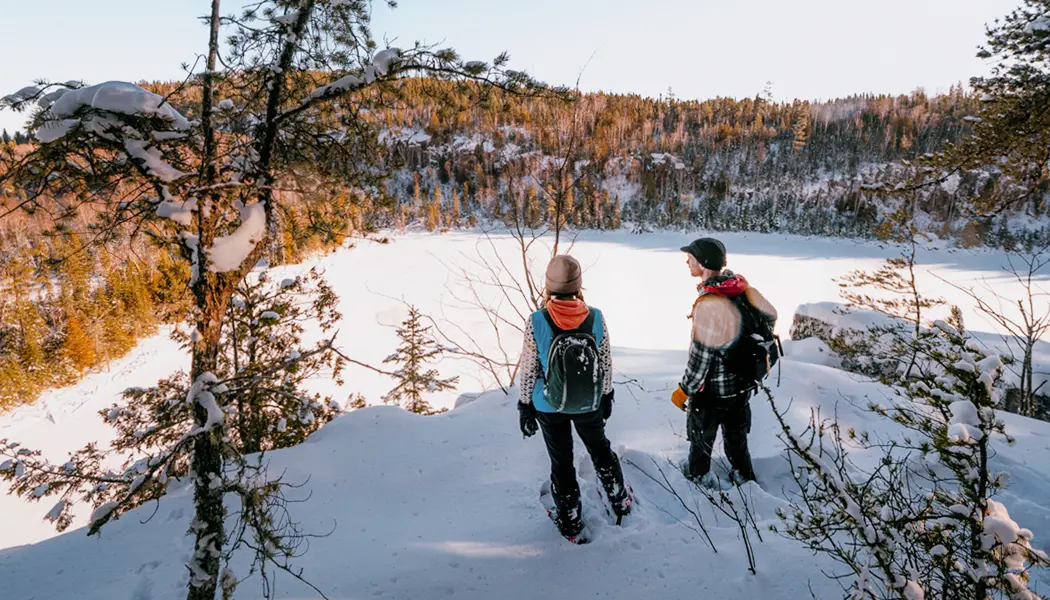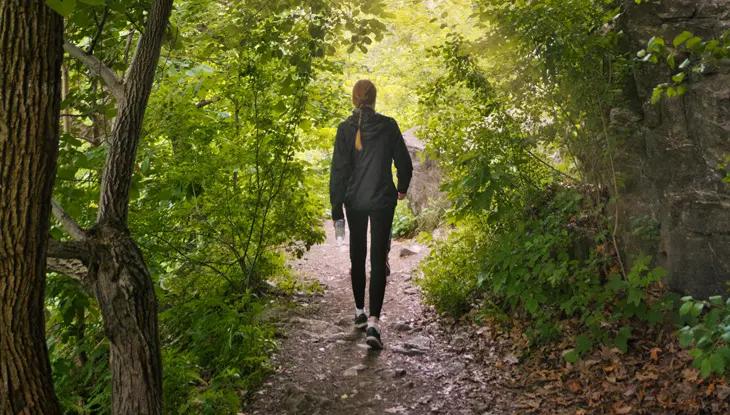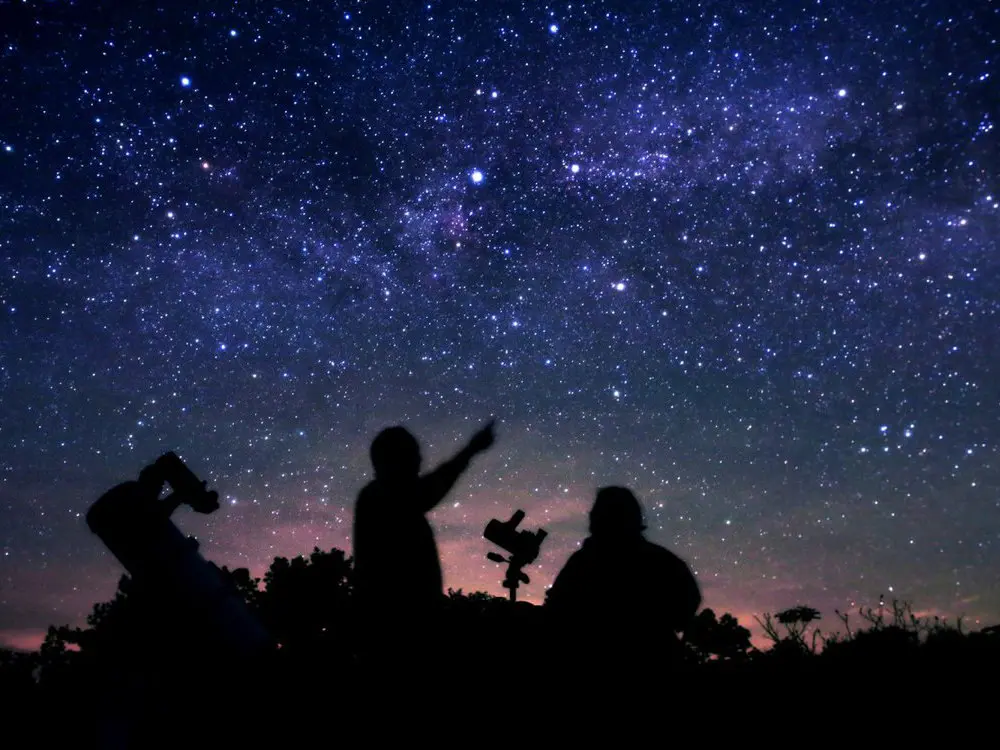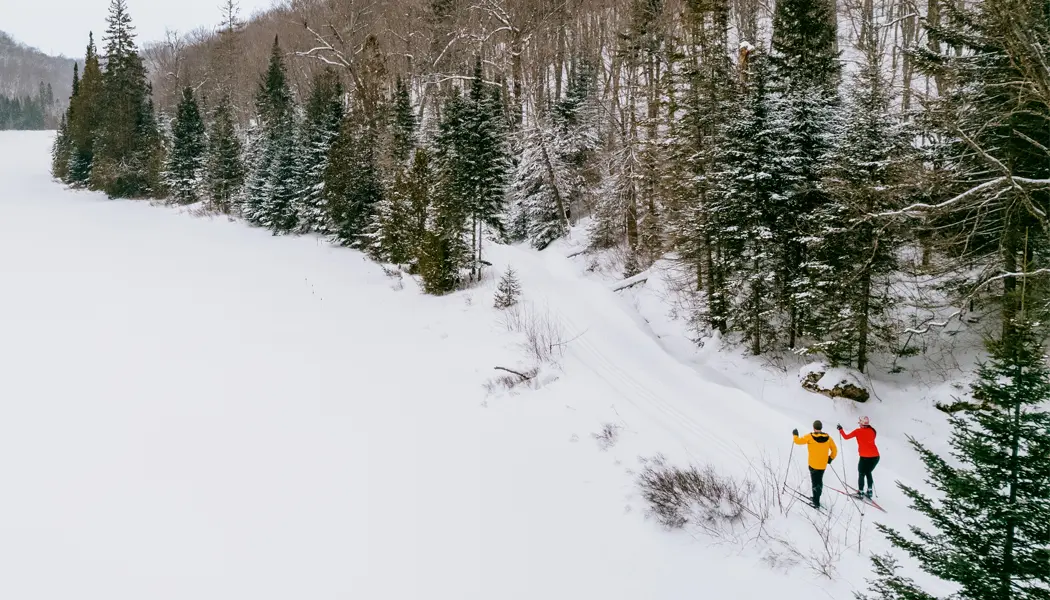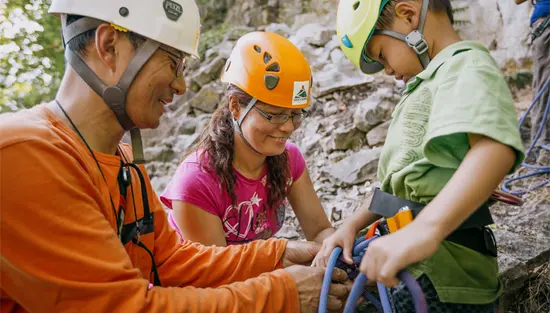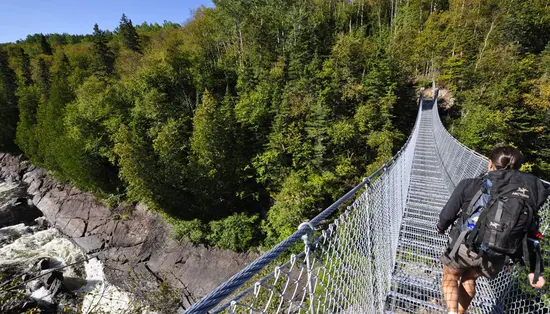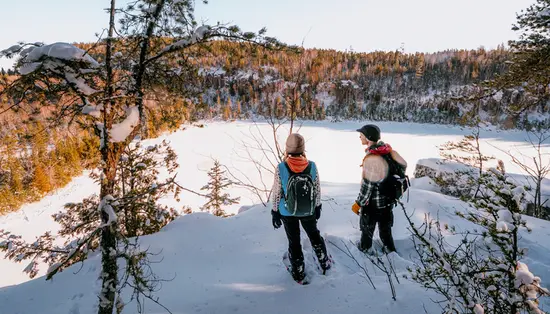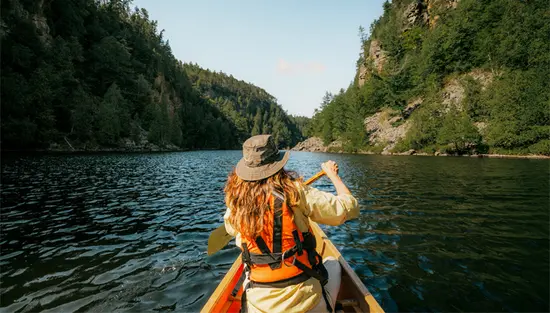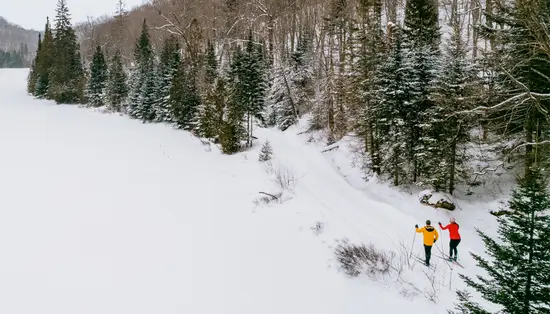Bruce Peninsula National Park
Bruce Peninsula National Park is one of the largest protected areas in Southern Ontario. It’s famous for rugged natural cliffs and rocky caves that rise out of the turquoise waters of Georgian Bay.
Situated on 156 square kilometres, the park sits atop the Niagara Escarpment with spectacular views and vistas. Established in 1987 and operated by Parks Canada, Bruce Peninsula National Park provides visitors with incredible outdoor experiences, from extensive hiking trails to stargazing and winter camping.
Bruce Peninsula National Park | Destination Ontario
How to get to Bruce Peninsula National Park
Location: Tobermory
By car: Several key sites in Bruce Peninsula National Park are accessible from Highway 6. The Visitor Centre is at 120 Chi sin tib dek Road in Tobermory. Limited first-come, first-served parking is available during the summer at the Visitor Centre and Singing Sands.
By transit: Parkbus is a private tour company that provides seasonal bus service from Toronto to Bruce Peninsula.
By ferry: The Chi-Cheemaun Ferry transports passengers and vehicles between Tobermory and South Baymouth on Manitoulin Island.
Know before you go
Reservations for camping and most parking at Bruce Peninsula National Park are required. Make reservations well in advance.
The Chi-Cheemaun Ferry operates in the spring, summer and fall. It operates two to three times a day, depending on the season.
The park is extremely popular from mid-June to mid-September, so consider visiting in early spring, late fall or winter for a quieter visit.
Things to do at Bruce Peninsula National Park
Discover more activities and experiences.
Swim in a stunning natural pool
Take an hour-long hike to “The Grotto,” a limestone sea cave and an underwater tunnel that glows in the sunlight. This is one of the park’s most popular attractions and requires pre-planning and reservations.
Explore coves and beaches
Find unique coves, rock formations and beaches, such as the cobblestone beach at Indian Head Cove, the rare cliff-edge ecosystem at Driftwood Cove and the gorgeous boardwalk at Singing Sands beach.
Connect in nature
From bouldering to birdwatching, geocaching to fishing, canoeing to snowshoeing, there are so many activities and experiences available at the park.
Hike the trails
Hiking trails in Bruce Peninsula National Park lead through mixed forests, along the rugged shoreline and connect to the Bruce Trail, the longest marked hiking trail in Canada.
Enjoy wildlife viewing
Keep an eye out for wildlife, including black bears, snowshoe hares, red foxes, porcupines, deer and diverse species of birds.
Camp year-round
Camping and overnight accommodation options in the park include drive-in sites, group camping, backcountry camping, yurt camping and winter camping.
Articles and itineraries
Get ideas and inspiration for your next trip.

Interesting facts about Bruce Peninsula National Park
Bruce Peninsula National Park is located along the Niagara Escarpment, a long cliff created by retreating tectonic plates most famous for producing Niagara Falls. The rock of the escarpment is approximately 400 million years old.
The Bruce Peninsula is an ecological hotspot home to several rare and sensitive plant species. The concentration of over 30 types of rare and unique orchids is higher than any other Ontario location. It also supports half the world’s remaining Dwarf Lake Iris, rare Tuberous Indian Plantain and over 20 kinds of ferns.
The park is also a designated Dark Sky Preserve, which is an area that restricts artificial light pollution, making it ideal for stargazing.
Accessibility features
Wide doorways and hallways
A sufficiently wide, hard-surfaced, unobstructed path to allow for easy travel.
Automatic doors
Main entrance doors and other accessible entrances and exits are power assisted to allow easy access.
Accessible seating
For persons using mobility aids, accessible seating is available in all areas or levels for persons using mobility aids. The path to the accessible seating should be barrier-free so a person using a mobility device can access it. Reserved space with a clear view of the event/activity for someone who is seated, good sound quality and adequate maneuvering room for a mobility device.
Easy access electrical outlets
At least one electrical outlet is within easy reach and has clear floor space in front for charging an electric mobility device.
Wheelchair and/or mobility devices available
Mobility devices such as wheelchairs, walkers, canes or mobility scooters are available for people to borrow or rent at the business. If you make wheelchairs or assistive devices available to the public, it is important to make sure that they are properly maintained and periodically serviced so they are in good working order and do not present a safety risk.
Support persons welcome
By law, you must allow a person with a disability to be accompanied by his or her support person while in the areas of your business that are open to the public. A support person is an individual hired or chosen by a person with a disability to provide services or assistance with communication, mobility, personal care, medical needs or with accessing goods, services or facilities. If you charge an admission fee at your business, you must let people know you charge an additional fee for a support person.
Service animals welcome
Can be identified by visual indicators (such as a vest or harness) or documentation from a regulated health professional confirming the animal is necessary due to a disability. In Ontario, service animals are allowed in all public spaces unless otherwise prohibited by law. A service animal is not a pet; it is trained to perform tasks to assist a person with a disability, such as guiding individuals with vision impairments, alerting to sounds for those with hearing impairments, assisting during seizures, retrieving items, or helping manage psychiatric and neurological disabilities. There are no restrictions on the type of animal used as a service animal in Ontario. If the animal is not easily identifiable, the person can provide documentation from a regulated health professional confirming the need for the service animal.
Assistive listening devices available
Assistive listening devices are available for rent or free of charge. You can select this feature if you offer assistive listening devices to help people with hearing loss better hear a performance or event. These devices can include frequency modulation (FM) systems, infrared systems and audio induction loop systems. It is important to check the devices periodically to ensure that they are in good working order (i.e., working batteries and not in need of maintenance).
Accessible parking space
Accessible parking provides a place for people with disabilities to park and space to get in and out of their vehicles safely. It also provides access to the main accessible entrance and/or any other accessible entrances. Most users of wheelchairs need at least three feet of clearance to get in and out of their vehicles.
Accessible washroom
At least one washroom stall larger than the others to accommodate adequate maneuvering space for mobility devices. They also include grab bars, transfer space, an accessible door latch, sink with knee clearance, and lever handles or automatic sensor faucets.
Universal washroom
A separate washroom that allows an individual in a wheelchair to use a self-contained washroom facility. They include grab bars, transfer space, an accessible door handle/lock, accessible sink with knee clearance, easy-to-use/automatic faucets, adult change table and emergency call systems. It is also universal, allowing people of any gender to use it comfortably, including with a support person if needed.
Emergency communication systems
Providing alerts and information in multiple formats including text-based alerts, audio messages and visual cues.
Accessible recreation trails
Trails with a firm and stable surface, designed to be accessible for individuals of all abilities. These trails are intended for public use, offering opportunities for leisure and recreation. To qualify as an accessible recreational trail, your site must have at least one such trail that is regularly maintained.
Last updated: September 2, 2025


